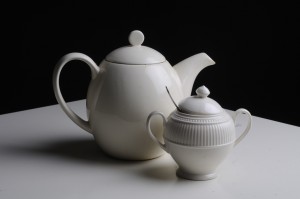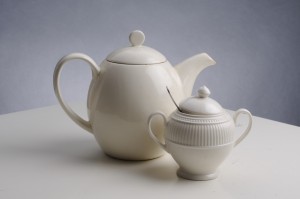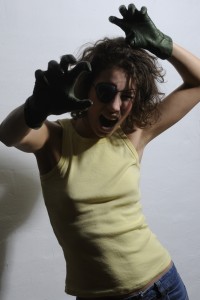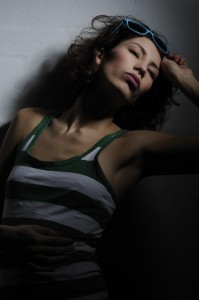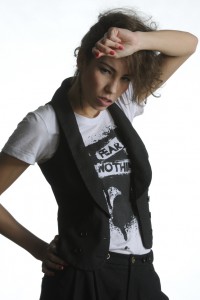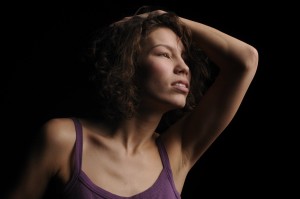Last Saturday I attended Frank Doorhof’s workshop Studio Technique 1. It teaches the basics of studio lighting and forms the foundation for his other workshops. For those who are not familiar with Frank’s work, go have a look at www.frankdoorhof.com. Frank is also the first (and as far as I know, the only) European photographer participating in Scott Kelby’s training program (see www.kelbytraining.com for more information). During the morning Frank talks you through a Powerpoint presentation explaining the lighting theory. He also uses his own pictures to illustrate the theory. His mantra throughout the morning was: you have to see the light to understand the light, and you have to understand the light to see the light. It may sound like a statement from Johan Cruijff at first, but it started to make more sense during the workshop. For instance, you can learn a lot by looking at pictures of other photograpers. Do they use hard or soft lights (watch the edge transfer!), one light source or multiple, where are the specular highlights? Ask yourself these kind of questions. So, watch, interpret, and understand. That is to see the light to understand the light. Another element of the theory is working with light meters. A topic often neglected in books and in non-European workshops. Franks explained the difference between incident and reflected metering and how to use it. Reflected light meters – the ones in cameras and in handheld meters – all work towards a neutral intensity. Better known as 18% grey. If we understand this, we can make use of it by making a white background black or the other way around, for example. Take a reflected (not incident!) meter reading of a black background to give you a certain aperture value. If you then would take a picture with these settings, you would see that the black background turned (18%) grey! If we understand that each stop up doubles the amount of light, then 1 stop up would give you 36% grey. And another stop up would give you 72% grey. One more would give you 144% grey! Too much, of course, but 2.3 stops more would give you a fairly white background. And with studio lighting you can do this. You can set a strobe to give more or less light (on my Elinchrome’s D-Lite’s you can set this in 1-tenths of a stop).
Time for a quick demonstration I did at home after the workshop. Simple setup: small white table with teapot and sugarpot, with a black background. One light source: D-Lite 4 with softbox on the right, at power 3.0. Incident metering gave 1/125 with f/16. The result is the left image below. Then I put another D-Lite 4 underneath the table with a standard reflector at power 5.5. Result is the right image below. Mind you: same black background in both pictures.
Because I only used one strobe for the background, it is not 100% evenly lit on the photo on the right. If done properly, you can a good white background even with a piece of black paper. It’s just intended as a simple illustration what you can do if you understand the light.
After the theory part we continued with the hands-on section. Frank arranged a model (Stephanie) to be there the whole afternoon. We used a number of different setups, but most of them just with one light source. We worked with softboxes, octa’s, reflectors with grids, different backgrounds, etc. I found instructing the model how to pose and to use expressions not very easy. Communication with the model is important, but at the same time you also have to pay attention to the light, settings of the camera, composition and so on. Quite a number of things you have to do at the same time, so I forgot to communicate. Frank kicked off each session and because he worked tethered we all could immediately see his results on one of the large screens. After that it was our (individual) turn. Bit of a pity that the work of the students wasn’t discussed at all. There were only three of us, so it was a pretty informal session with plenty of discussion (on all kinds of subjects). Around 4pm we called it a day. A lot of information was given, but a lot also needed to sink in. Frank took us to his store where you can buy pc add-on’s, calibration tools, colorcheckers and, of course, his dvd’s. I decided to buy one of them that contained the theory part and also a number of instruction video’s. Good to have as reference.
Below are a few shots I made during the workshop of model Stephanie.
